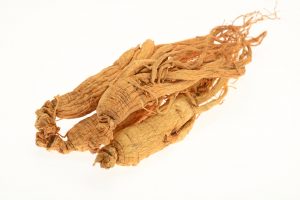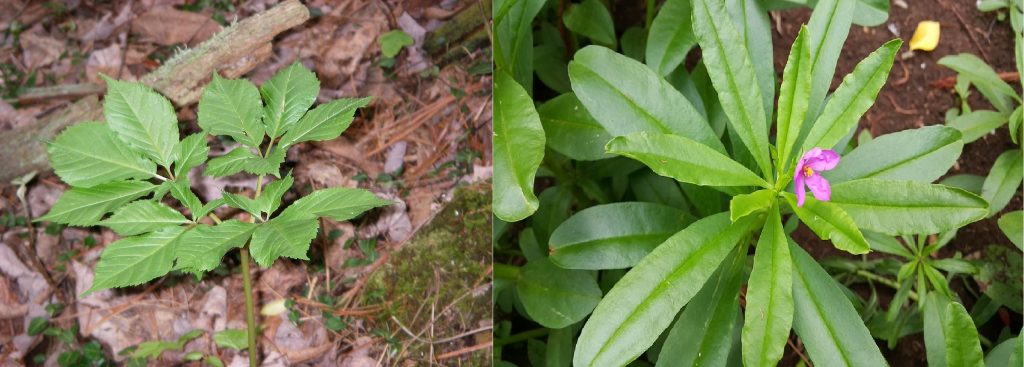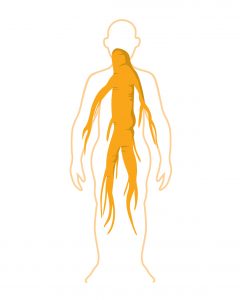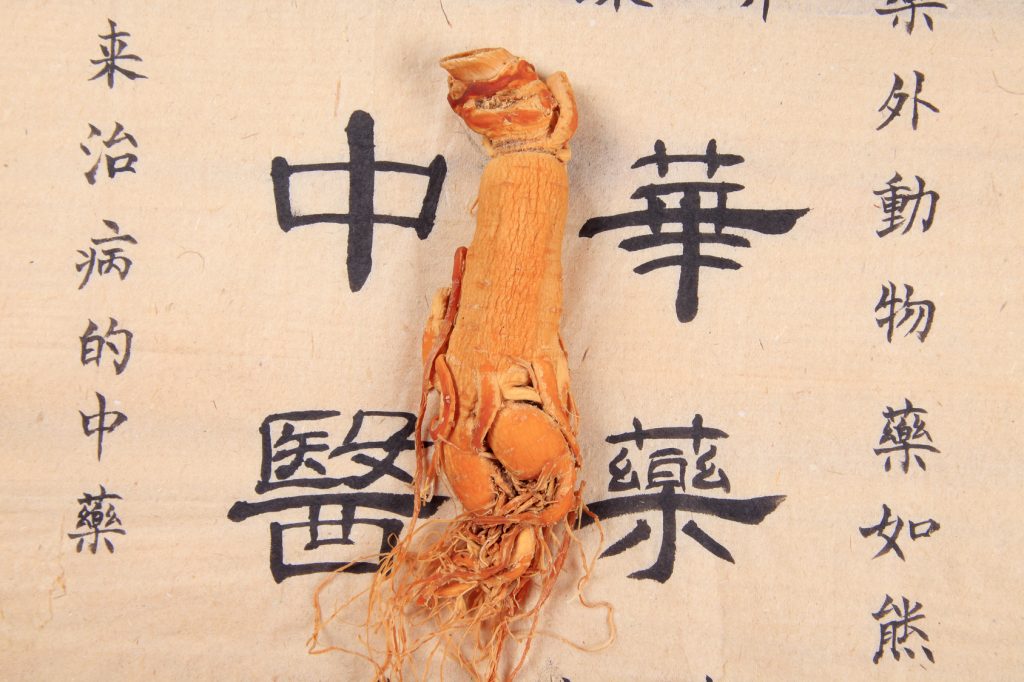Time-tested adaptogen root herb for masculine health may provide mild testosterone support.
 Grown primarily in eastern Asia, Panax Ginseng is a legendary adaptogen with roots in ancient Chinese health practices. While various Ginseng species share its name & chemical structure, Panax Ginseng is believed to be the best for masculine health, including testosterone. It’s believed to help men’s T levels by:
Grown primarily in eastern Asia, Panax Ginseng is a legendary adaptogen with roots in ancient Chinese health practices. While various Ginseng species share its name & chemical structure, Panax Ginseng is believed to be the best for masculine health, including testosterone. It’s believed to help men’s T levels by:
- Reducing stress. Adaptogens help the body adapt to stress, which may assist in raising healthy testosterone levels.
- Decreasing prolactin. Women need prolactin for milk production during pregnancy. Men experiencing high levels run the risk of low T levels.
Overview
Referred to as the “King of Herbs,” Ginseng is one of the oldest therapeutic plants in eastern Asia, rivaling only other perennial remedies such as green tea shrubs & ginkgo biloba as perhaps the oldest form of green therapy in human history. Its common name Panax Ginseng comes from the Greek words Pan (meaning “all”) and Axos (meaning “medicine”), establishing its global reputation as a botanical “cure all.”
Although most Ginseng products provide the eastern Asian Panax Ginseng, there are actually 11+ Ginseng species total, grown from around the world–most notably Asian Ginseng & American Ginseng.1 For the most part, these herbs share the same structure and nutrients, but their small differences can have significant effect on their T-boosting abilities (or lack thereof) and other male-enhancing benefits.
Asian vs American Ginseng: What’s the Difference?

- Geography. The first (and obvious) distinction between the two is where they’re grown & cultivated. Panax ginseng originates from Russia and East Asia, whereas American Ginseng comes from the U.S. and Canada.
- Appearance. While the roots look generally the same (like plump little humans), the “above-ground” portions slightly differ in that American Ginseng’s leaves are more serrated and its flower grows closer to the stem than Asian Ginseng’s.
- Bio-Activity. Both Ginsengs share the same active saponins, ginsenosides, but American Ginseng has been shown to have more ginsenosides and in a composition that promotes more antioxidant potential.2 Although, Asian Ginseng has a much stronger reputation & effect on libido & stamina.3
Non-scientifically, American & Asian Ginsengs are often referred to as “Yin” & “Yang” herbs, respectively. On a subjective scale, American Ginseng has more frequently been described as a a “relaxing” focus agent, while Asian Ginseng is more of a “revitalizing” mood-enhancer. Given the widespread, unanimous reports of these “subjective” differences, we’re willing to lend credence to these anecdotal comparisons.
Which Ginseng is best for T?
![Even the Soviets fancied themselves a little ginseng. By Post of USSR [Public domain], via Wikimedia Commons](https://supplementsinreview.com/wp-content/uploads/2016/07/1960_CPA_2498-221x300.jpg)
How Ginseng Might Help Testosterone
Strengthens Stress Resistance
At the center of Ginseng’s adaptogen identity is its ability to help the body adapt to stress. Theoretically, this can be achieved through a few pathways: Inhibition of stress hormones, reduction of inflammation, resistance to free radicals, etc. While Ginseng’s exact adaptogenic mechanism hasn’t been fully explored, it’s believed to reduce excess cortisol (stress hormone) levels and provide antioxidant support–two bio-actions associated with healthy T levels.4
Decreases Prolactin
Animal research and a few human trials suggest that Ginseng helps reduce Prolactin, a T-killing hormone best known for helping women produce milk during childbirth. While some Ginseng studies don’t necessarily link this with increased testosterone, the inhibition of prolactin is an important step towards normalizing T levels.
Regulates DHT levels

Admittedly, the research is mixed on this function: Some studies show that Ginseng helps T levels by inhibiting 5 alpha reductase enzyme, which converts T to DHT.5 Other research suggests that Ginseng actually increases DHT, which is actually favorable considering that DHT is an even manlier androgen than T.6 Either way, it seems that Ginseng has some regulatory action on DHT, which may help T.
Research
In general, Ginseng studies involving healthy subjects (human & animal) with normal testicular function are rare—whereas most positive research on Ginseng’s T-boosting abilities includes infertile subjects. Yet, there are a few studies that stand out.
Animal Research
One rat study, involving the administration of 1% and 5% Panax Ginseng diets to two groups plus control, took a look into Ginseng’s effects on T levels and prostate health. The results revealed mild-to-modest T-boosts for the two groups:
- 1% Ginseng group. Non-significantly increased T by 8%.
- 5% Ginseng group. Increased T by 62%.7
In both Ginseng dosages, an increase in food intake was implemented, which may partly explain the increase in T—but this doesn’t account for the notable difference in T levels between both Ginseng groups.
However, in a separate rat study that administered either 10, 50, or 100 mg/kg of American Ginseng to three groups, the hormone analyses draw a different picture:
- Between the Ginseng-treated and placebo groups, no changes in luteinizing hormone (LH) or T were observed. Instead, the researchers found significantly reduced prolactin levels (female T-killing hormone) for all Ginseng groups.8
Bear in mind that this study used American Ginseng as opposed to the previous study’s Panax (Asian) Ginseng, which may have altered the results. Regardless, both rat studies show male-enhancing promise for both Ginsengs.

Human Research
Post-training 20 g of Ginseng root extract did not increase T.
Considering Ginseng’s long reputation as an adaptogenic performance-enhancer throughout eastern Asia, it makes sense to study its T-boosting potential in an athletic setting. In this small, placebo-controlled study, 8 college students were administered 20 g Ginseng or placebo immediately after exercise. Blood samples were drawn before & after exercise and at 4 times during the 2-hour recovery period.
- Based on the results, Ginseng did not significantly alter T levels compared to the placebo group. 9 Yet, there’s only so much “conclusion” we can draw from this study considering its weak design (only 8 subjects, short-term administration).
Elusive study shows increases in T, DHT, FSH, & LH and decrease in prolactin.
Floating around the Interwebs is a rather skimpy abstract of a 1996 study on Panax Ginseng, which was administered to 66 patients—46 of which had low sperm quality, 20 who were used as controls. Regarding the results, the researchers simply stated that “an increase in plasma total and free testosterone, DHT, FSH and LH levels, but a decrease in PRL [prolactin]” was observed following Panax Ginseng supplementation.
- Their conclusion: “ginsenosides may have an effect at different levels of the hypothalamus-pituitary-testis axis.” However, considering that the article can’t be found online and that its abstract relays very minimal information, take this study with a mindful dose of optimism.6
Each study has its shortcoming in terms of design & transparency. But from what we gathered, the take-home message here is that:
Ginseng might help with T—especially under conditions of testicular impairment.
Dosage Notes
In general, Ginseng dosages are widely variable, depending on the A) Ginseng quality, B) Use for supplementation, C) User’s physical dimensions (i.e. weight, gender). For sex health, Ginseng dosages are recommended as:
- 3 grams total daily
- Three doses of 1000 mg
Human trials on T & sexual function seem to hover around this dosaging schedule—however, more recreational uses of Ginseng may look like:
- 200 mg – 400 mg daily
- 40 mg being the lowest dosage with demonstrated bio-action
These two bulletin points refer to Ginseng Extract standardized to 4% total Ginsenosides, whereas crude dried root powder will naturally require the higher 3 gram daily doses for optimal effect (especially with regards to T & sex).
Side Effects
In a systematic review on the “efficacy and safety of ginseng,” the researchers qualified the herb with a generally “good safety profile.” On the whole, there’s a low risk of Ginseng side effects, which predominantly include mild gastrointestinal tract discomfort:
- Nausea
- Cramps
- Diarrhea
- Vomiting
Of all the varieties, Korean Red Ginseng is most associated with these side effects—however, this may be representative of its increased efficacy.12
Available Forms
![By Pearson Scott Foresman [Public domain], via Wikimedia Commons](https://supplementsinreview.com/wp-content/uploads/2016/07/Ginseng_236_PSF-159x300.png)
- Red Ginseng. Panax that’s been steams & dried, changing some bio-active compounds that induces a “reddish” color in the plant.
- White Ginseng. Panax that’s been air-dried (not steamed), creating a “white-ish” color. Considered less popular that “Red” becuase the air-drying process has a higher risk of losing bio-active nutrients.
Additionally, Ginseng extracts can come in different formats–capsule, tablet, powder, liquid–and different extract standards–typically between 2% to 10% ginsenosides. While this hasn’t been validated in any research, 4% ginsenosides seems to be a solid standardization for Ginseng–although anywhere within the 2% – 10% range works as well.
Supplements in Review Recommendation
- Panax Ginseng std. to 4% – 10% ginsenosides, 200 mg – 400 mg daily.
Stack Ginseng with more T-Boosters. On its own Ginseng is a solid sex-enhancing adaptogen with T-protective benefits, but it works best combined with other heavy-hitting T-boosters. Because it might mildly contribute to T and helps with sex, performance, stress, and other bio-actions men care about, we think Ginseng is a sensible ingredient to include as part of a larger T-booster stack.
Not all Ginseng is “Ginseng.” And not all Ginsengs that are “Ginseng” are the same kind of Ginseng. For the best T-boosting results, go for Asian or American Ginseng (but mainly Asian in the Korean Red form), especially if you’re experiencing issues with your libido.
References
Leave a Reply